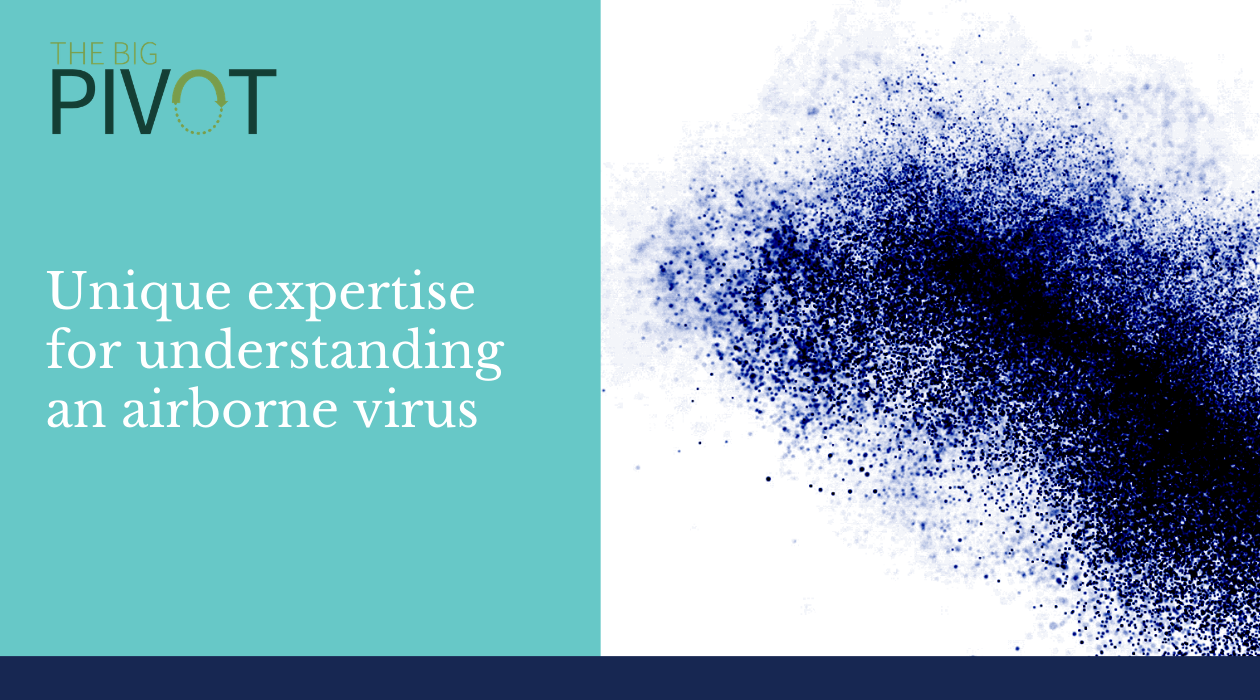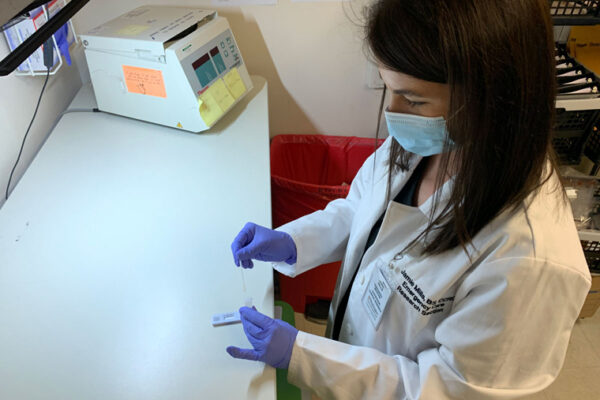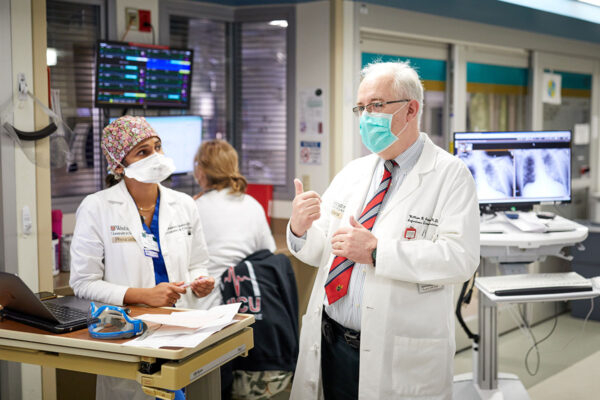Researchers at the McKelvey School of Engineering at Washington University in St. Louis are at the forefront of aerosol science. The Center of Aerosol Science and Engineering (CASE) conducts research from as high as 250 miles above Earth at the International Space Station all the way down to remote marine environments: their expertise ranges from the broadest scale to the molecular level.
Right now, they are putting this expertise to work to learn more about COVID-19. Researchers are looking at everything from the pandemic’s impact on the environment to how long social-distancing restrictions should remain in place to still be effective.
Here’s a closer look at some of the groundbreaking research being carried out by faculty and researchers at CASE.
In the air
Jian Wang, CASE director; professor of energy, environmental and chemical engineering
Wang and members of his lab are studying the impact of business disruption due to COVID-19 on the atmospheric aerosol population. Working in the Azores, thousands of kilometers ‘downwind’ of North America, his team is exploring whether the shutdown is leading to a decrease of aerosol concentration in remote marine environments.
Randall Martin, professor of energy, environmental and chemical engineering
Martin and his group are applying satellite remote sensing to assess how air pollution is changing around the world in response to COVID-19. He also is collaborating with colleagues to understand how air pollution affects COVID-19 mortality rates.
Jay Turner, vice dean for education; professor of energy, environmental and chemical engineering
Turner and his team have been conducting long-term air quality measurements in a Louisville, Kentucky neighborhood to determine if there have been changes to air quality and exposures. The measurements are for their NIH-funded study on the effects of greenness on cardiovascular health.
“Like many environmental research projects, we just happen to be in the field at this time and can track impacts of COVID-19 on environmental burdens.”
– Jay Turner
On the ground
Pratim Biswas, assistant vice chancellor; chair of the Department of Energy, Environmental & Chemical Engineering; the Lucy & Stanley Lopata Professor; and head of the Aerosol and Air Quality Research Laboratory (AAQRL)
AAQRL researchers are working with infectious-disease physicians at the School of Medicine who are working with COVID patients. They are deploying IOT-enabled sensors to monitor airborne concentrations, providing healthcare workers with a quick overview of conditions in patient observing rooms.
Biswas also has a patented air-cleaning technology that not only removes particles with efficacy but also has been proved to completely inactivate bioagents, including a range of viruses. This would be ideal to use in ventilated, indoor environments.
Rajan Chakrabarty, assistant professor of energy, environmental and chemical engineering
Chakrabarty has used computer modeling to determine how social distancing relates to demand for both hospital beds and ICU beds based on different scenarios.
He also has found that if intermittent social distancing is extended longer a 5-to-1 distancing/no-distancing period, the benefit diminishes to a negligible level.
His model, which is unique in its inclusion of age stratification, also forecasts the epidemic’s evolution over time.
Zooming in
Brent Williams, the Raymond R. Tucker Distinguished InCEES Career Development Associate Professor
Williams is guiding one of two groups researching how well face masks can filter out particles, such as viruses and small droplets and investigating low-tech solutions for the public. They are collaborating with the School of Medicine and the Sam Fox School of Design & Visual Arts on mask design and fit.
AAQRL researchers are working to better understand the infectivity of SARS-CoV-2 and the aerosolization of antiviral agents. The study will aid in the development of aerosol delivery methods for antiviral drugs. The work is being done by PhD candidate Hao Zhaou under Biswas’ guidance.
Under Biswas’ direction, doctoral student Sukrant Dhawan is developing models of aerosol dynamics to get an accurate estimate of the lifetime of airborne SARS-CoV-2 virus.
AAQRL is testing a variety of commercial and homemade face masks to understand the efficiency of alternative materials for masks that can be used by the public. The work is led by Ben Kumfer, research assistant professor, with PhD students David Dhanrajv and Shruti Choudhary. Biswas is guiding the research.
Researchers also are working to determine evaporation times and settling times for droplets of different initial sizes.
Richard Axelbaum, the Stifel & Quinette Jens Professor of Environmental Engineering Science
Axelbaum is working to identify options to address the shortage of N95 respirator masks available to healthcare workers.
He is taking into account factors such as filter material and fit, but also relevant science concepts, such as fluid dynamics—important because the forces that drive the movement of air (breath) when we inhale differs from those at work when we exhale. As such, the requirements for face masks differ depending on, among other things, whether we’re trying to protect the wearer or protect others from the wearer.



